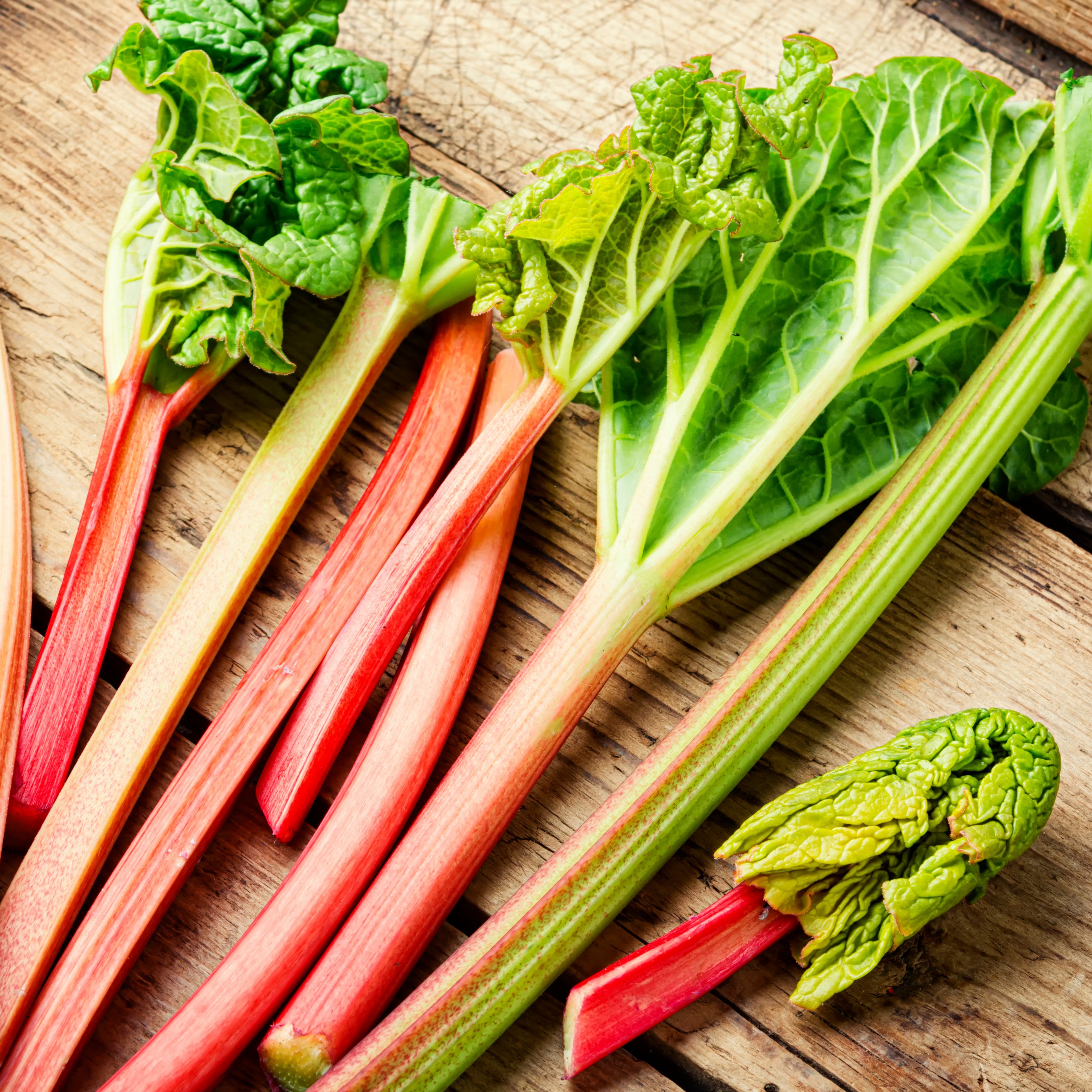
Rhubarb
Rhubarb is not strictly a vegetable - it’s a hardy perennial that’s ornamental enough to be used in the border, with huge, deep green leaves and pink, red or greenish leaf stalks. It’s the stalks that rhubarb is grown for, much loved in crumbles, with custard or in preserves. However, it’s had a renaissance, with top chefs pairing it with mackerel or roasting it to bring out its sweet and tart flavours.
Over the years, D.T. Brown have introduced many exclusive varieties including Poulton's Red. Allowing growers to harvest delicious rhubarb from February (if forced) and continue through to November – up to 10 months of the year. 2
How to grow Rhubarb
Rhubarb is easy to grow, provided it has an open, sunny site with moist, but free-draining soil as it hates being waterlogged in winter. A little light shade can be tolerated. Avoid frost pockets as young stems can be damaged.</p> <p>Plant dormant crowns between autumn and spring. Dig in two bucketfuls per square metre/yard of well-rotted manure or garden compost. Spread out the roots and ensure the tip of the crown is just visible above the soil. Pot-grown rhubarb can be planted at any time, but will need plenty of water if the weather is dry. Space plants 90cm/3ft apart, with 30cm/12in between rows.
Rhubarb can also be grown in large containers at least 50cm/20in deep and wide. Apply a mulch of composted manure, but avoid the crown. Add 100g per sq m (4oz per sq yard) of general purpose fertiliser in March, such as Growmore and water regularly until autumn.
Remove leaves when they die back to expose the crown to frost, which will break dormancy next season and ensure a good crop. Keep plants weed-free and remove any flowering stems. Harvest by holding each stalk close to the ground and pulling upwards with a twisting motion. Always leave at least four strong stems on each plant. Apply a balanced fertiliser after harvesting and mulch with rotted manure or compost during the winter, avoiding the crown. We recommend that you do not harvest plants in the first year after planting, as this allows time for them to become fully established.
Please note: Rhubarb leaves are poisonous, containing oxalic acid, and must be removed completely before the stalks are cooked. However, they can be composted or use the leaves whole as a weed suppressant, as the oxalic acid breaks down quickly.
Filters
4 products
-
2 Large A Grade Crowns Code: 54034
-
6 Large A Grade Crowns Code: 60946
-
3 Crowns Code: 54516
-
2 Large A Grade Crowns Code: 40319
-
1 x 9cm potted plant Code: 48491
-
1x 2 Litre Potted Plant Code: 64856









